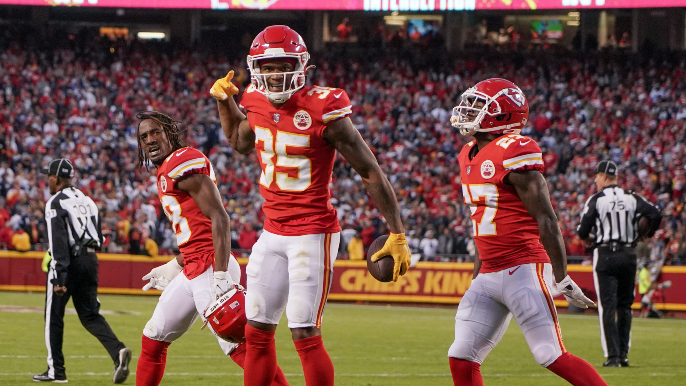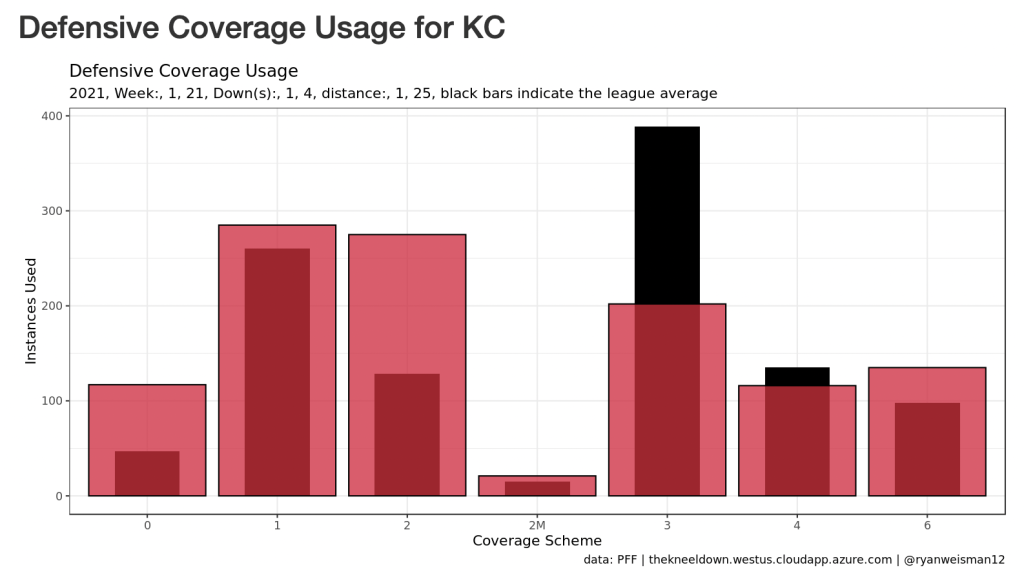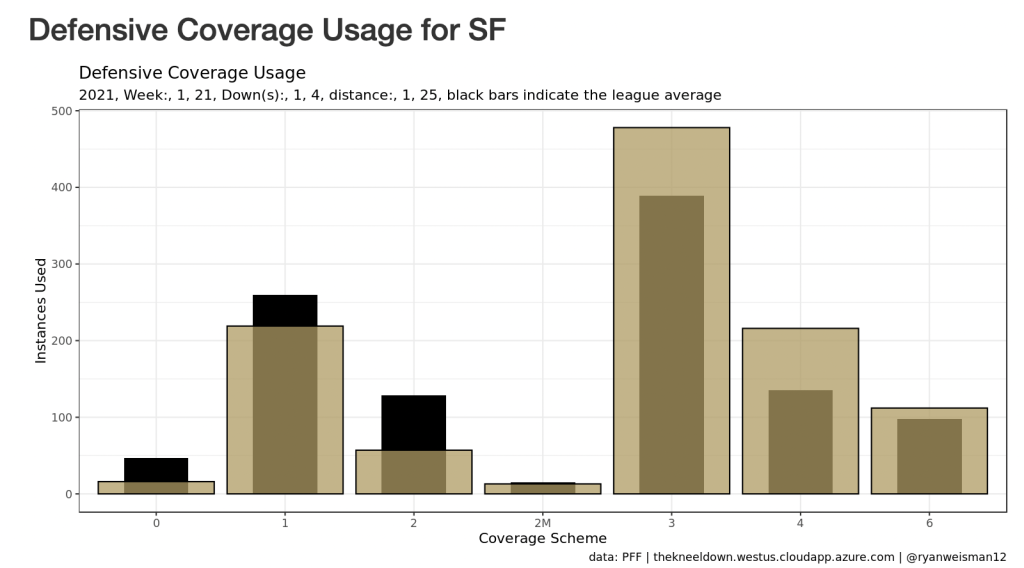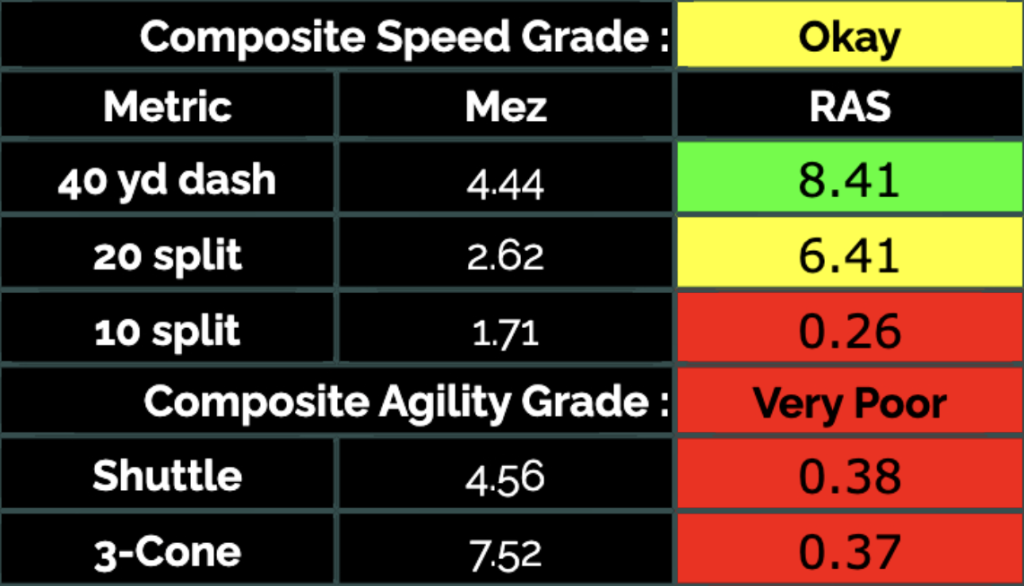
The 49ers signed a corner! Rejoice!
After the Josh Norman experience melted our collective brains for a 14-week stretch that felt more like a nuclear winter, the 49ers went proactive this offseason to amend the situation.
Rookie corner Ambry Thomas came on strong down the stretch and throughout the playoffs, but at a position that has long been battered by injuries, it is always wiser to secure depth early or face the prospect of trying to scrape value off the bottom of the bargain bin.
By signing former Chiefs corner Charvarius Ward to a reported three year, up to $42 million deal, San Francisco has now established a trio of corners aged 26 or younger who all have tangible upside in the present and future in Ward, Emmanuel Moseley (25) and Ambry Thomas (23).
That doesn’t include Deommodore Lenoir, also 22, or the potential corner the 49ers could draft with one of their nine current selections.
There is some question as to whether Emmanuel Moseley would be the nickel corner on slot downs — which has become the 49ers’ base alignment — with Ambry Thomas as the outside corner.
It would be asking more of Moseley who has looked excellent in tight splits as the boundary corner, but it would seem the best way to get the 49ers’ best three corners on the field at the same time. That willl likely be tested in training camp.
As for Ward, whenever teams add a corner from noticeably different defensive schemes, there’s always the question of fit.
Can a corner like Ward, whose talent lies most prominently in his man press skills adapt to a zone-heavy system with the 49ers? Or might the 49ers look to employ more man coverage elements this upcoming season?
Sometimes those scheme distinctions are substantial, but skilled, intelligent corners tend to handle that transition well.
Here’s what the coverage breakdown looks like between what the 49ers ran last season and what the Chiefs ran, per Ryan Weisman’s TheKneeldown:


You can see the 49ers (on the bottom) differed pretty substantially from the Chiefs, running mostly Cover 3 compared to mostly Cover 1 for Kansas City. Kansas City also ran Cover-0 and Cover-2 quite a bit.
Generally speaking, these are two wildly different schemes, with defensive coordinator Steve Spagnuolo leaning heavily on man coverage and getting creative by switching assignments and disguising coverages.
But Kansas City’s defense is far less balanced than San Francisco’s, so there’s an element of that creativity being necessary, especially against the AFC, and especially AFC West, where the quarterbacking and receiving talent is nonsensically good.
For DeMeco Ryans, it was a case of, everywhere on the 49ers’ defense was sound except at corner. So much of what Ryans sought to accomplish was limiting the damage his corners could cause to the rest of the defense.
Running plenty of Cover-3, sometimes with Big Nickel looks of three safeties, Ryans tried to protect his corners for much of the season.
With Ward, there may be a willingness to get more creative and lean on man coverage a bit more. The 49ers started to experiment with Cover-6 (a variable coverage in which responsibilities are dictated based on the routes run by opposing receivers). It requires flexibility, intelligence and man matching skills from most players in the secondary.
There are a few things that show up on tape watching Ward. These assessments are based largely on watching the All-22 film of the Chiefs’ last two games, in the playoffs against the Bengals and Bills, in which Ward faced some of the league’s most dynamic receivers in Ja’Marr Chase, Stefon Diggs, Gabriel Davis and Tee Higgins.
In general, he fared pretty well against that group. Here are the notes:
Pros
- Exceptional in press coverage, really gets stuck into receivers at the line and has very long arms; his length makes it hard to get out of his orbit and disengage, even if he gets beat for a step or two
- If you try to beat him outside, he will use the sideline and his length to his advantage and cut off your space. That also makes it exceptionally challenging to try to beat him with fades or any deep ball over the top because he stays in phase well.
- Has the long speed and is smart with his hand-fighting to limit separation and break up passes.
- For the most part, demonstrates solid eye positioning and a comprehension of coverage; sound in his assignments and tracks the ball well. Looks fairly comfortable in most zone coverages tracking everything to his outside hip and over the top.
Cons
- Has heavy feet; while he’s got long speed, his short-area quickness leaves a lot to be desired. That showed up at his pre-draft testing, too. He had some prominent struggles in those short quickness drills (numbers below per RAS football).

- Those issues show up on tape; he is most susceptible to in-cutting routes and double moves that start outside and challenge him to the inside. Stefon Diggs beat him a few times in that Bills game but wasn’t targeted because Mike Hughes and Daniel Sorensen were getting cooked on the other sideline by Gabriel Davis to the tune of four touchdowns.
- He is also not an especially strong tackler. It looks almost like his long arms make it tough for him to judge how to wrap up at times and his missed tackle on Samaje Perine cost the Chiefs a touchdown. His aforementioned length and eye positioning does, however, allow him to remain in position and make safe tackles, but he’s not an explosive, proactive tackler.
I won’t pretend to know all the intricacies of footwork as an NFL corner. But I can compare Ward’s footwork to other corners, and as someone with heavy feet, I know what heavy feet look like.
On the whole, though, the tape shows that Ward consistently gives receivers a hard time. Anyone who tries to engage with him at the line of scrimmage struggles to disengage.
He limits separation with his length and has an uncanny knack to hand fight and remain physically engaged with receivers without committing penalties, which was the bane of the 49ers’ existence for the first half of the season.
Ward committed just four penalties last year, two defensive pass interference calls and two defensive holding calls for a cumulative 15 yards.
Josh Norman committed 11 penalties, nine of which were for defensive pass interference or defensive holding for a total of 109 yards (even with three of those penalties declined).
He’s not just clean, he’s effective, too. There are some objective measures that back up what the tape says.
Per NFL Next Gen Stats, Ward allowed the lowest average separation on targets (2 yards) and second-lowest completion percentage among defensive backs (44.8 percent), among defensive backs with at least 50 targets in 2021. He also defended 13 passes, tied for 13th-most in the league.
That tight window rate of 46.3 percent — which measures when there is less than one yard of separation when the ball arrives — was the fourth-highest rate in a season since 2016. These measures all indicate that Ward closes space and keeps it closed.
He may not be a traditional Cover-3 zone corner, but that’s also something you can say simply because he’s been in a scheme that emphasizes man principles.
While $40.5 million over three years comes out to a pricey, $13.5 million average, that’s fair market value for a corner who has consistently troubled elite receivers and is just 26 years old.
By all accounts, this is a major upgrade to the secondary, and it could allow for Ryans to experiment more with coverage.

